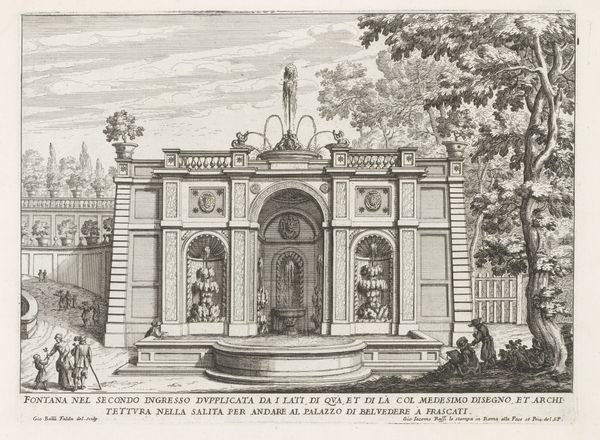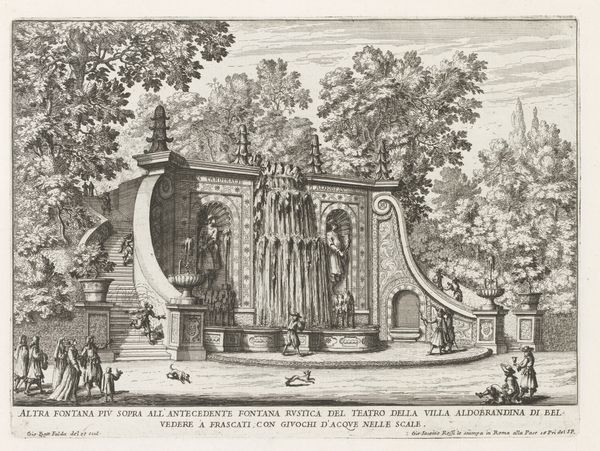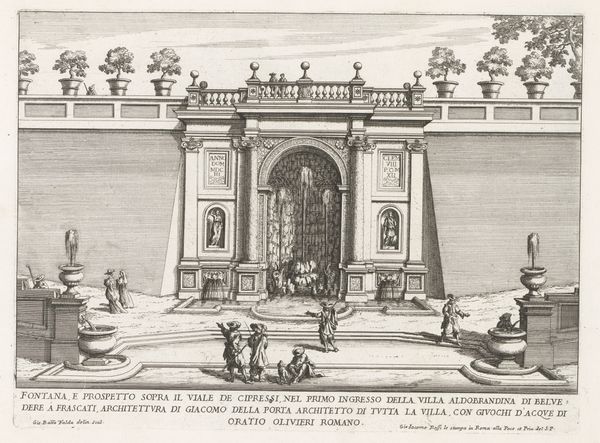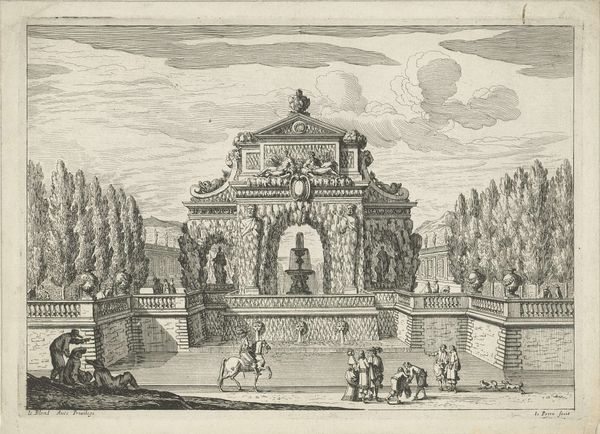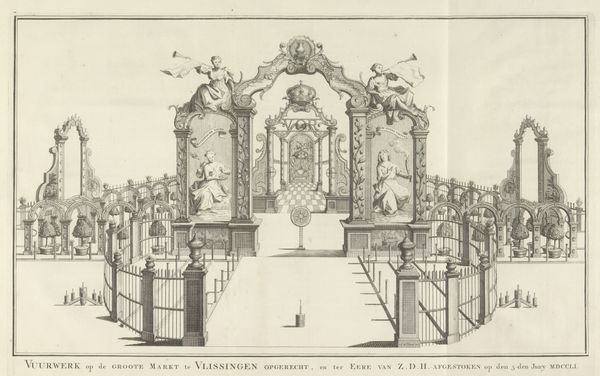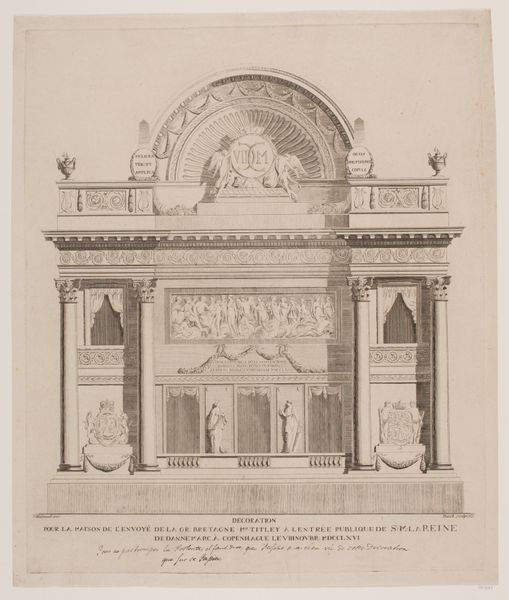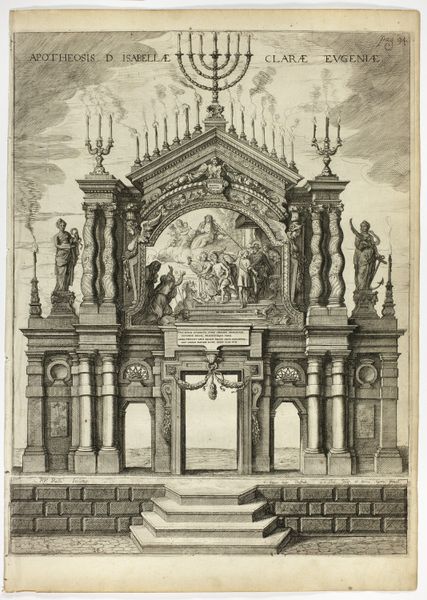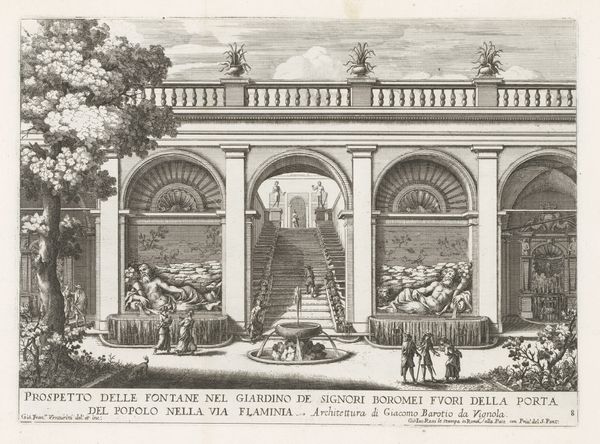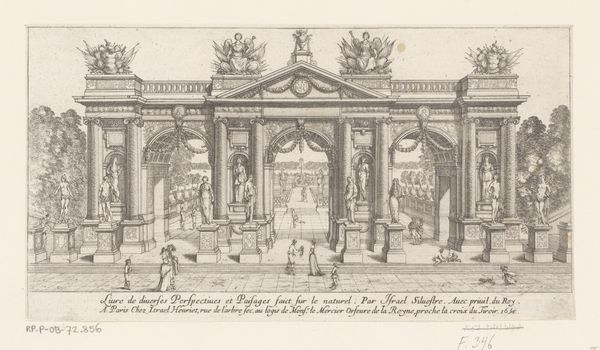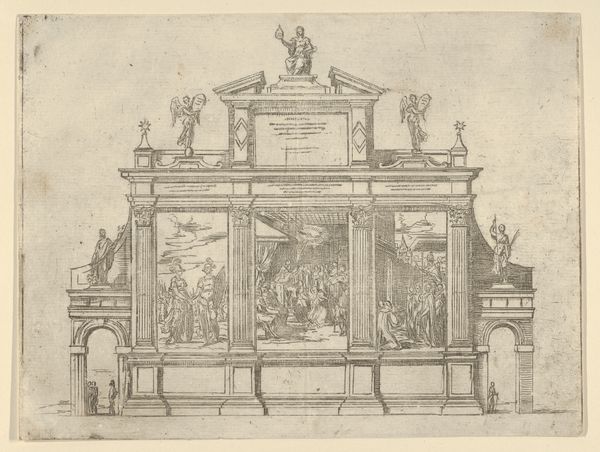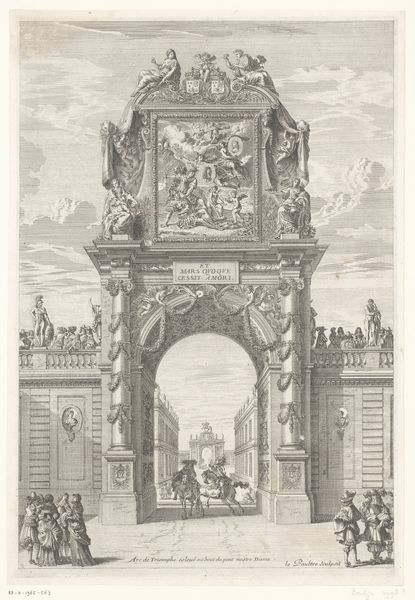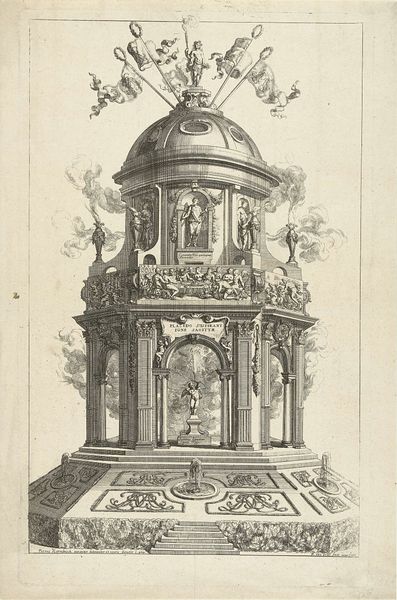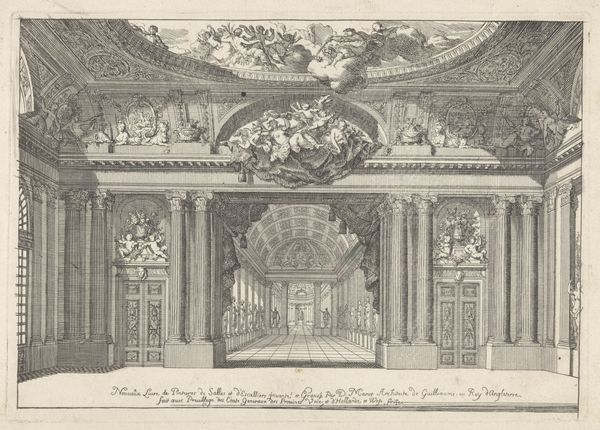
Fontein met hydraulisch orgel in de tuinen van de Villa d'Este te Tivoli 1653 - 1691
0:00
0:00
engraving, architecture
#
garden
#
baroque
#
landscape
#
cityscape
#
italian-renaissance
#
engraving
#
architecture
Dimensions: height 240 mm, width 361 mm
Copyright: Rijks Museum: Open Domain
Editor: Here we have Giovanni Francesco Venturini’s "Fountain with hydraulic organ in the gardens of the Villa d'Este at Tivoli," an engraving from between 1653 and 1691. I’m struck by the contrast between the highly structured architecture of the fountain and the wilder, more organic forms of the surrounding gardens. How do you interpret this work? Curator: Formally, this print presents a study in contrasts, doesn't it? Notice how Venturini manipulates line and shadow to differentiate between the solidity of the man-made structure and the relative lightness of the surrounding foliage. Observe, too, how the composition guides the eye – from the intricate details of the fountain itself, up to the sculptures, then outwards into the softer, less defined areas. Do you see how the geometry of the architecture intersects and interacts with the looser lines of the trees? Editor: Yes, I see how the crisp lines define the architecture while the garden is depicted with more feathery strokes. Is that contrast meant to symbolize something? Curator: It may, and that is one valid perspective. Looking at the structural relationships within the image, we can decode how Venturini constructs a visual hierarchy through differing treatments of line, tone, and form. The engraving foregrounds the artificial over the natural, imbuing value through detailed formalistic and precise renderings. What is your take on it? Editor: I think understanding the formal elements gives me a richer way of looking at the contrast between nature and artifice and a better understanding of the engraving. Curator: Precisely. Paying close attention to formal properties enriches our analysis, enabling us to see relationships and perhaps propose meanings we might have missed initially.
Comments
No comments
Be the first to comment and join the conversation on the ultimate creative platform.
